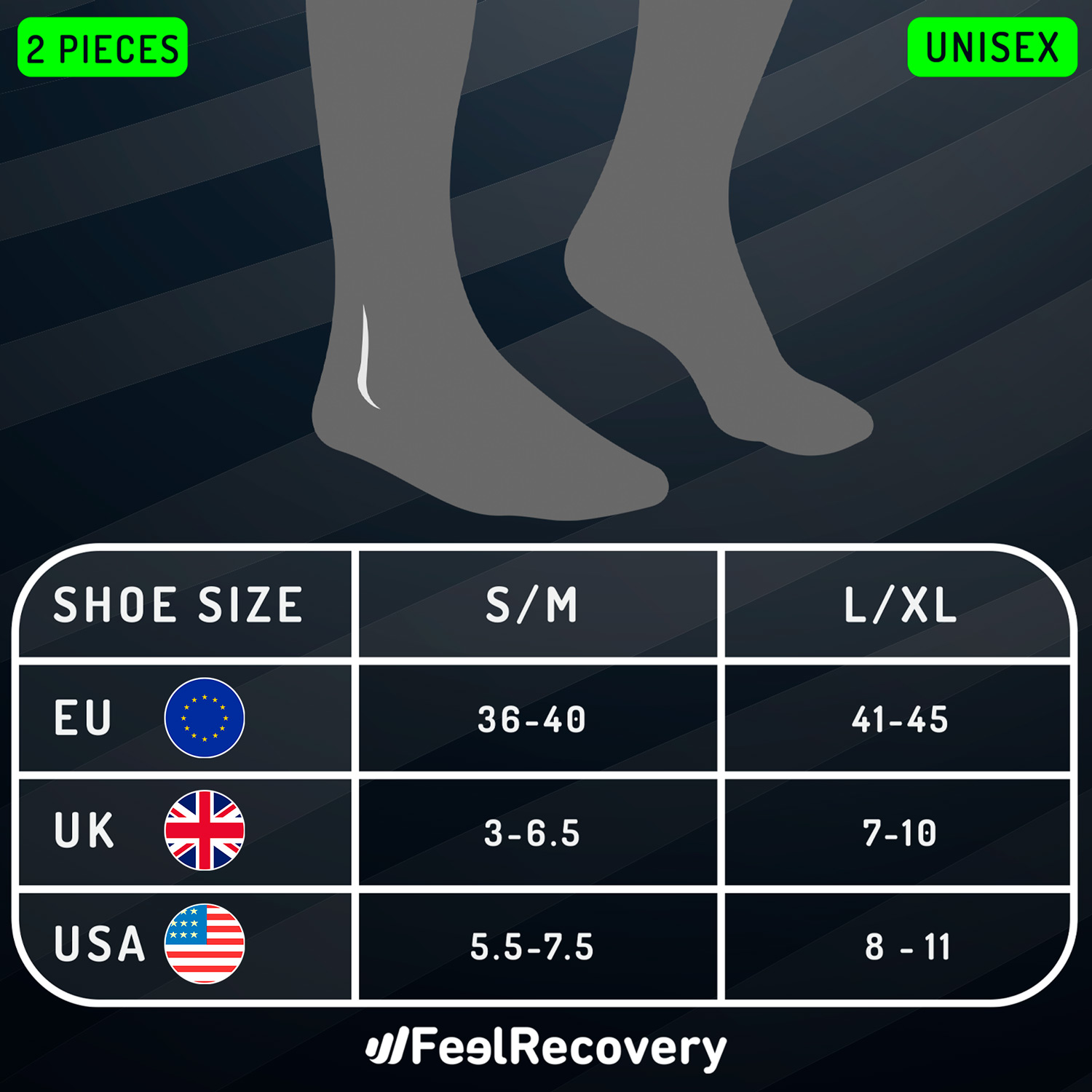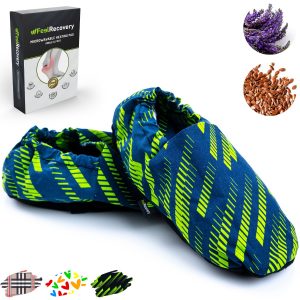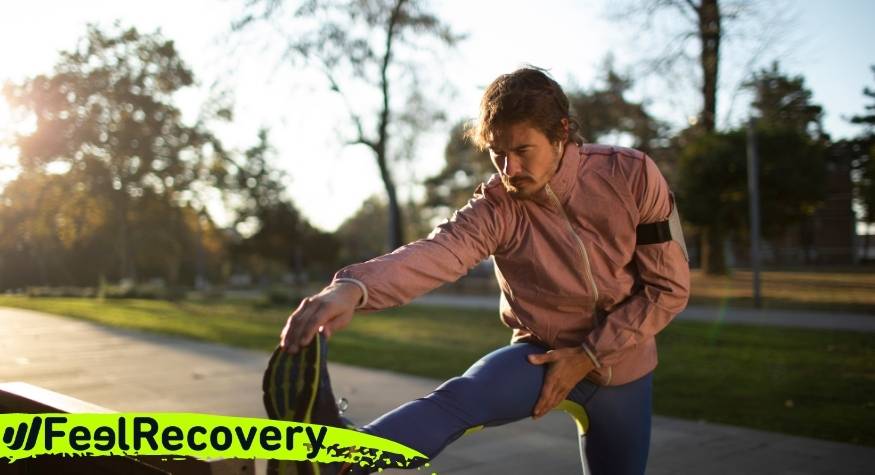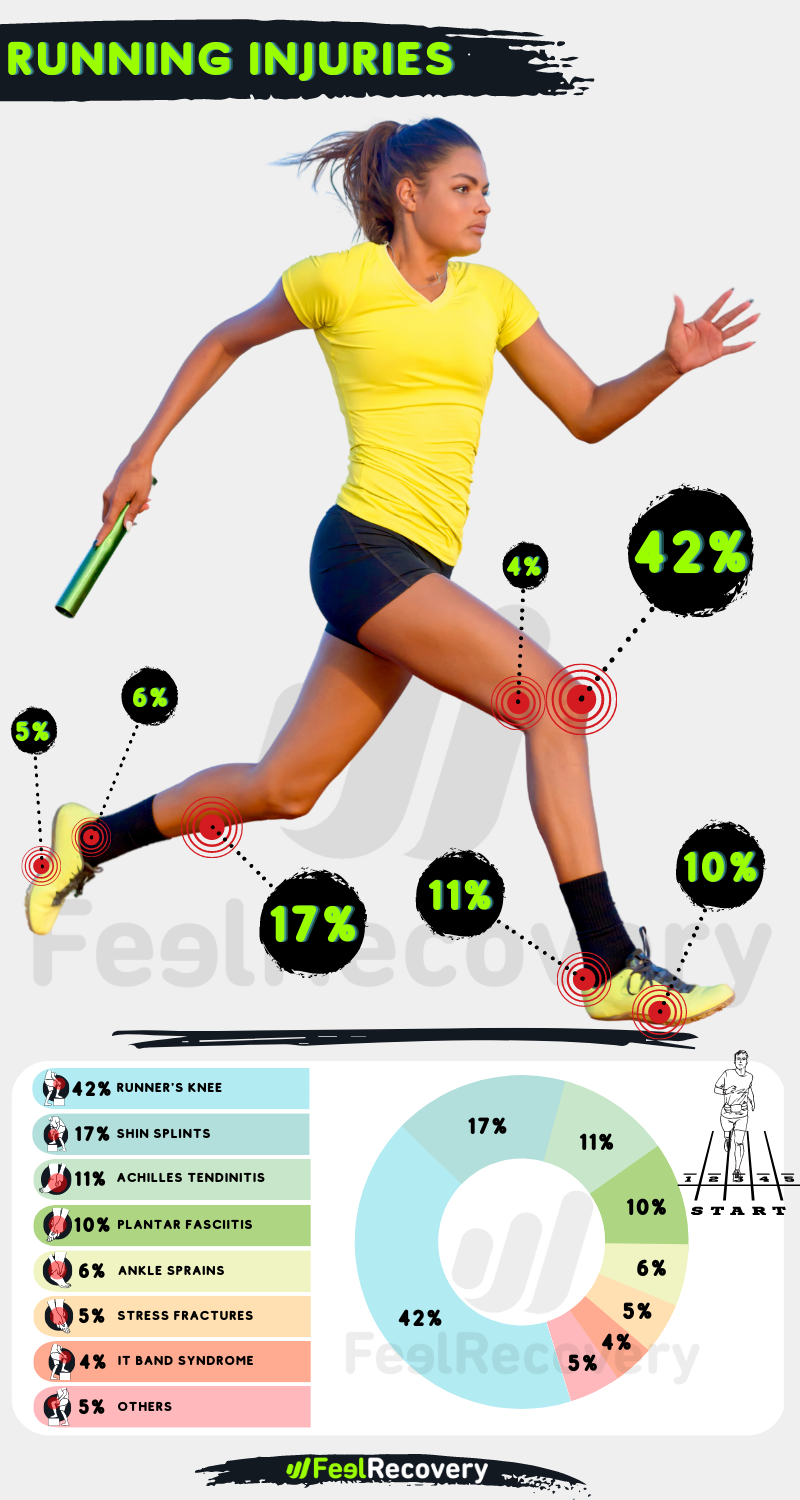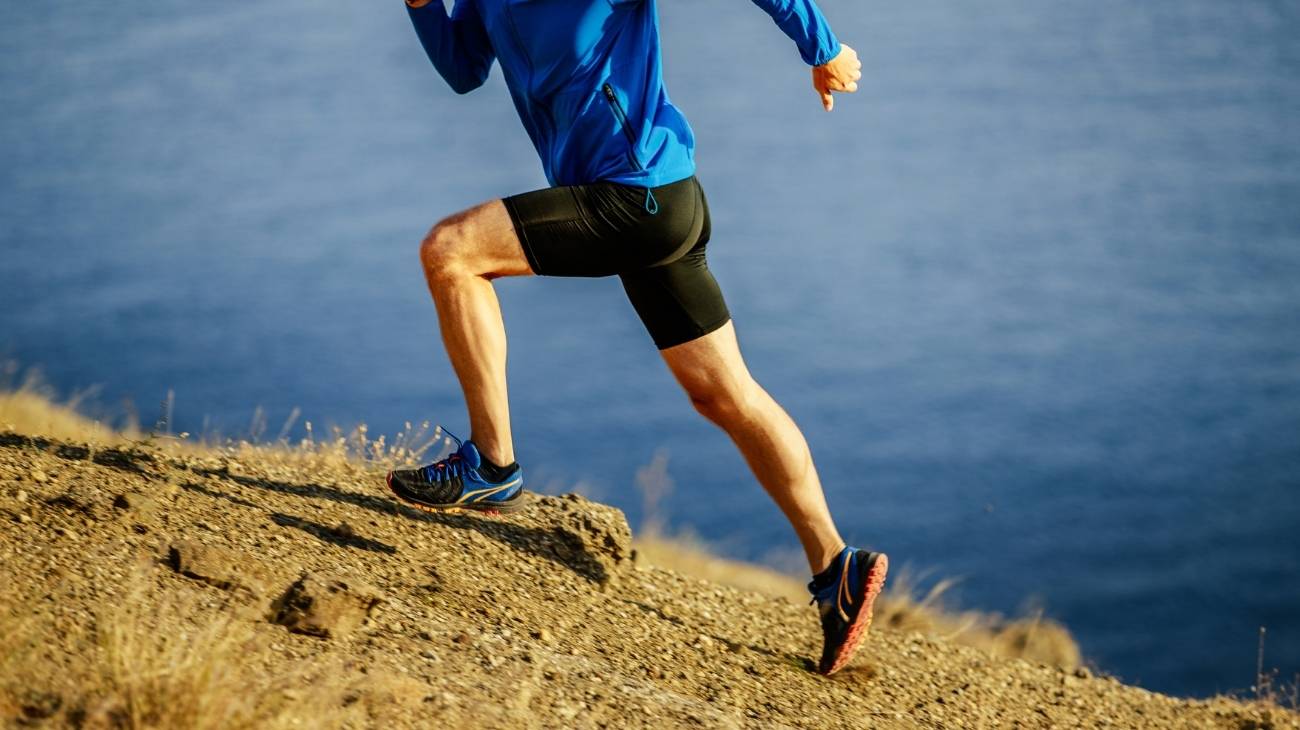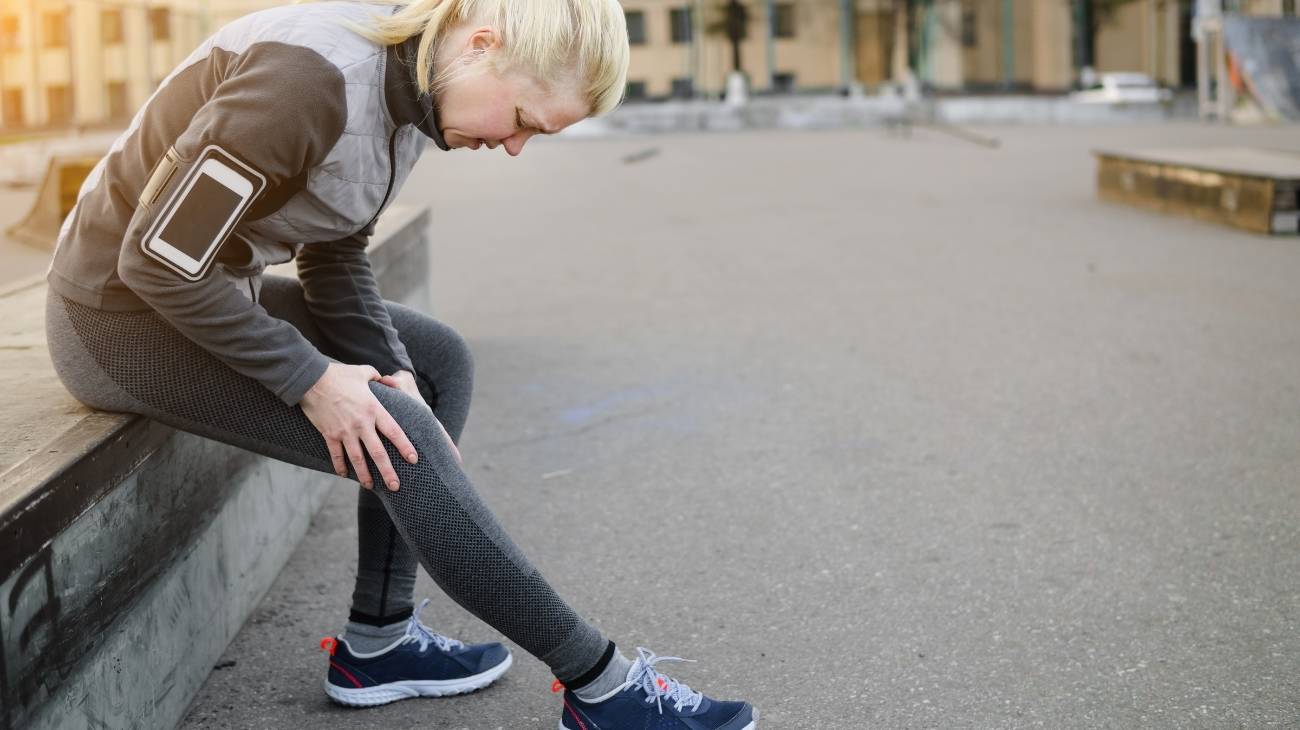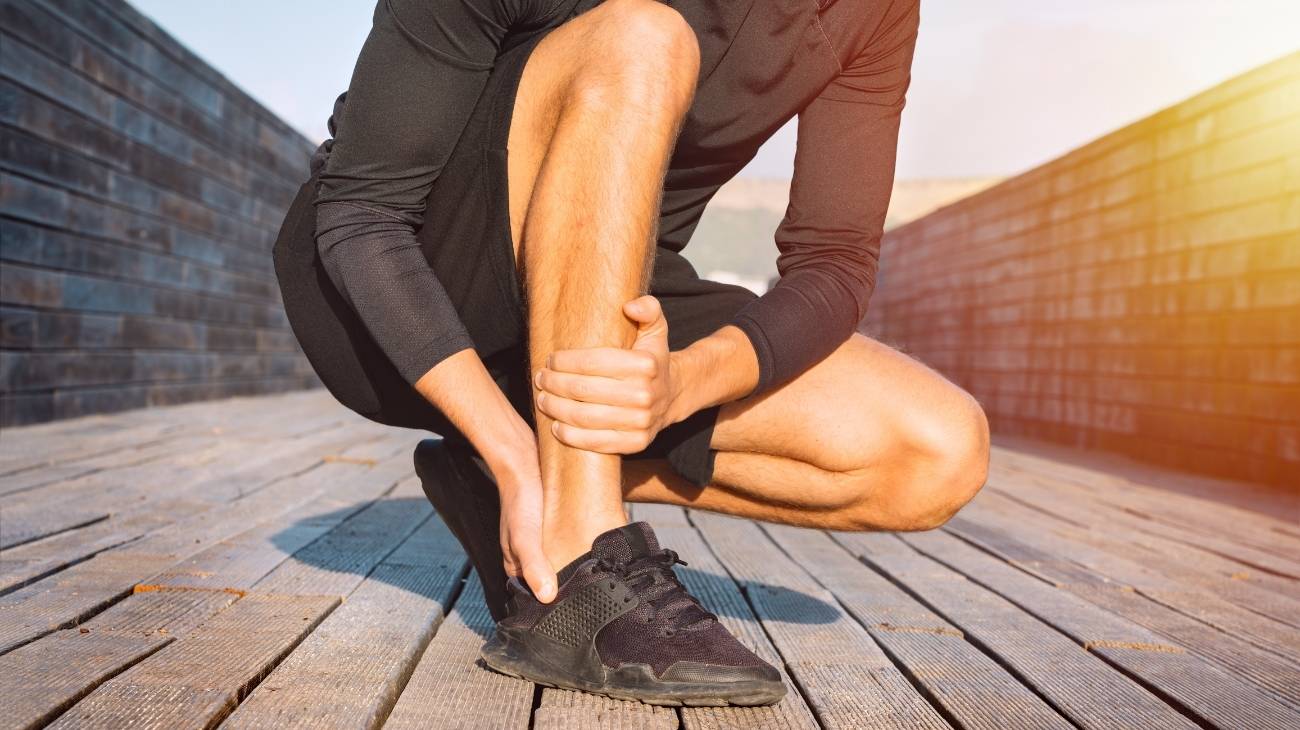Although it is a high impact sport, injuries are not as common in running as in other sports, but the possibility is always present. Although many of these injuries can be treated with physiotherapy and rest, there are times when these fail and surgery is the only viable option.
In this article you will learn in depth about the surgical procedures that are usually applied to the main injuries suffered by runners, as well as the recovery time for each one and when it is preferable to go to the operating theatre to be able to return to the track as soon as possible.
What are the most common types of running injuries?
Here are some of the most common injuries that runners are exposed to, so that you know how to identify them when you notice any ailments in your lower joints, although the neck is not exempt from suffering them too.
- Patellar tendonitis: occurs when the patellar tendon, one of the tendons responsible for flexing the knee joint, becomes inflamed due to the constant impact to which it is subjected during a long route or a long period of running. The runner will feel discomfort at the base of the knee and will feel a lot of stiffness when trying to bend it.
- Sprained ankle: if during a run we stumble or take a wrong step, the ankle can twist and suffer this injury that will certainly cause damage to the ligaments that make up the ankle. Depending on the degree of twisting and the force of the twist, it can cause anything from micro-tears to a complete rupture of the ligaments.
- Lower back pain: the lower back also has to withstand a lot of stress during a long route, so it is common for us to suffer from some condition that makes us suffer from this ailment characterised by severe pain in the lower back. The best thing to do in these cases is to rest completely for a couple of weeks before returning to running.
- Meniscus tear: it is not a common occurrence, but if we suffer a sharp fall during a race that causes us to suffer a sprained knee, it is possible that the meniscus may be damaged. This is a serious injury that could keep you off the track for a long time and even take you to the operating theatre.
- Plantar fasciitis: this is an inflammation of the fascia, a soft tissue found on the sole of the foot. This is a very common injury in runners due to the wear and tear this tissue suffers during running races. It is usually solved with rest and some physiotherapy, but if this does not work it will indicate that it has evolved into a chronic problem that requires surgery.
Best products for running injury recovery
Bestseller
-
2 Ankle Compression Sleeve (Black/Gray)
£17,50 -
2 Ankle Compression Sleeve (Green/Navy)
£17,50 -
2 Ankle Compression Sleeve (Pink/Bordeaux)
£17,50 -
2 Calf Compression Sleeve (Black/Gray)
£17,50 -
2 Calf Compression Sleeve (Green/Navy)
£17,50 -
2 Calf Compression Sleeve (Pink/Bordeaux)
£17,50 -
2 Knee Compression Sleeve (Black/Gray)
£17,50 -
2 Knee Compression Sleeve (Green/Navy)
£17,50 -
2 Knee Compression Sleeve (Pink/Bordeaux)
£17,50 -
2 Patella Knee Strap (Black/Gray)
£12,95 -
2 Patella Knee Strap (Green/Navy)
£12,95 -
2 Patella Knee Strap (Pink/Bordeaux)
£12,95 -
2 Thigh Compression Sleeve (Black/Gray)
£17,50 -
2 Thigh Compression Sleeve (Green/Navy)
£17,50 -
2 Thigh Compression Sleeve (Pink/Bordeaux)
£17,50 -
Acupressure Mat and Pillow (Black/Gray)
£44,95 -
Acupressure Mat and Pillow (Green/Navy)
£44,95 -
Acupressure Mat and Pillow (Pink/Bordeaux)
£44,95 -
Acupressure Pillow (Black/Gray)
£21,52 -
Acupressure Pillow (Green/Navy)
£21,52 -
Acupressure Pillow (Pink/Bordeaux)
£21,52 -
Back Support Belt (Black)
£29,95 -
Back Support Belt (Green)
£29,95 -
Back Support Belt (Pink)
£29,95 -
Foot Massage Roller for Plantar Fasciitis (Black)
£17,50 -
Foot Massage Roller for Plantar Fasciitis (Green)
£17,50 -
Foot Massage Roller for Plantar Fasciitis (Pink)
£17,50 -
High Density Foam Roller for Muscle (Black/Gray)
£24,95 -
High Density Foam Roller for Muscle (Green/Navy)
£24,95 -
High Density Foam Roller for Muscle (Pink/Bordeaux)
£24,95 -
Ice Massage Roller Ball (Black)
£34,95 -
Ice Massage Roller Ball (Green)
£34,95 -
Ice Massage Roller Ball (Pink)
£34,95 -
Ice Pack for Foot - Cold Therapy Socks (Black)
£21,95 -
Ice Pack for Foot - Cold Therapy Socks (Green)
£21,95 -
Ice Pack for Foot - Cold Therapy Socks (Pink)
£21,95 -
Microwavable Heated Slippers (Hearts)
£21,50 -
Microwavable Heated Slippers (Oxford)
£21,50 -
Microwavable Heated Slippers (Sport)
£21,50 -
Microwaveable Wheat Bag for Pain Relief (Hearts)
£17,50 -
Microwaveable Wheat Bag for Pain Relief (Oxford)
£17,50 -
Microwaveable Wheat Bag for Pain Relief (Sport)
£17,50 -
Pack 2 in 1: Foam Roller High + Soft Density (Black/Gray)
£24,95 -
Pack 2 in 1: Foam Roller High + Soft Density (Green/Navy)
£24,95 -
Pack 2 in 1: Foam Roller High + Soft Density (Pink/Bordeaux)
£24,95 -
Sacroiliac Support Belt (Black)
£21,95 -
Sacroiliac Support Belt (Green)
£21,95 -
Sacroiliac Support Belt (Pink)
£21,95 -
Soft Density Foam Roller for Recovery (Black)
£24,95 -
Soft Density Foam Roller for Recovery (Green)
£24,95 -
Soft Density Foam Roller for Recovery (Pink)
£24,95 -
Sport Compression Socks (1 Pair) (Black/Gray)
£17,50 -
Sport Compression Socks (1 Pair) (Green/Navy)
£17,50 -
Sport Compression Socks (1 Pair) (Pink/Bordeaux)
£17,50 -
Trigger Point Massage Stick (Black)
£12,95 -
Trigger Point Massage Stick (Green)
£12,95 -
Trigger Point Massage Stick (Pink)
£12,95
How to apply the RICE therapy to treat first aid running injuries?
PRICE therapy stands for: Protection, Rest, Ice, Compression and Elevation. It is a therapy that describes a series of first aid measures to be performed immediately after an injury, especially if it is a sprain or tear during a run.
Here is a step-by-step explanation of how to apply it:
- Protection: this consists of securing the injured area to prevent it from suffering a new injury or a blow that aggravates the one you have just suffered. This should be done with a bandage or even a tourniquet if it is a fracture.
- Rest: the next step is to stop moving the injured joint or limb and to rest as much as possible until the injury has healed or until a physiotherapist indicates it.
- Ice: With ice, we seek vasoconstriction that immediately after the injury helps to reduce inflammation and relieve pain as much as possible.
- Compression: this step consists of applying pressure on the injury so that the inflammation does not continue to progress. This can be done using bandages, although the most useful is a compression garment such as an ankle or knee brace depending on where the injury occurs.
- Elevation: by elevating the affected joint or limb above the level of the heart, we reduce the blood flow to it, which in the first few minutes of the injury will result in a reduction of inflammation.
Surgical treatments for severe or chronic injuries in runners and athletes
Generally in running there are not many serious injuries, but some runners are unaware and allow minor injuries to develop into chronic problems that require surgical treatment in order to cure the ailment.
Here are some of the most common surgical procedures to treat running injuries of all kinds:
Hip injuries
The hip is often injured by accumulated wear and tear from years of running, or by an accident during running that can fracture one of the bones that make up the hip. In this sense, the most serious ailments that can be identified in this area are osteoarthritis of the hip and hip fracture.
- Hip replacement surgery: A hip that is too badly damaged by osteoarthritis requires replacement of the most damaged parts of the cartilage. In this open operation, the surgeon removes the parts most damaged by osteoarthritis and replaces them with prostheses made of metal, ceramic or hard plastic. During the operation, the patient will be fully sedated and may require blood transfusions due to the large amount of blood that is usually lost in the process.
- Hip fracture surgery: this open surgery usually lasts 2 to 4 hours during which time an incision is made in the side of the thigh so that the surgeon can align the fractured bones and fix them with pins or titanium screws. As with the previous procedure, you will be fully sedated and may require a blood transfusion during or after the procedure.
Leg injuries
Rarely does a leg injury require surgery. The most common problems that are usually treated with this are total muscle tears, or fractures of the femur, a tremendously hard bone that is very difficult to break but which generates many problems when it does.
- Surgery for muscle tear: in the event that your quadriceps or biceps femoris has been completely torn, you will need open surgery in which the doctor will stitch up the tear to facilitate its regeneration.
- Surgery for femur fracture: surgery is usually avoided, but when the patient is elderly or the fracture is total, it is the only way to achieve complete healing. In this case, an incision is made at the fracture site to put the bone back in place and fix it with metal pins or screws.
Knee injuries
The knee is possibly the most problematic joint for any athlete in the world, and runners are no exception. The cases in which surgery will be impossible to avoid are cruciate ligament tears, osteoarthritis or total rupture of the patellar tendon.
- Knee replacement: If your knee is too worn out from osteoarthritis, a total knee replacement is necessary. In this surgery, the joint is completely replaced and two prostheses are implanted, one in the lower head of the femur and the other in the upper part of the tibia and fibula. After the procedure you will be limited for life from running and any other contact sport.
- Anterior cruciate ligament repair: this is an open surgery in which the torn ligament is replaced with a graft that is fixed with fixation instruments such as pins or surgical screws. Recovery time for this injury is usually 3 to 6 months.
Calf and calf injuries
Most calf injuries are muscle injuries due to the fact that this is a muscle that accumulates a lot of stress during running. Some of the most commonly applied surgical procedures in the area are:
- Surgery for calf tear: this is only necessary if the tear is complete and the muscle is permanently separated. In this case, an open operation is performed in which the damaged section of the muscle is sutured to speed up its regeneration.
- Surgery for tibia and fibula fracture: a fairly serious injury that will require an open operation to place the bones in position and fix them with pins or screws that can be removed when the bone heals or may even remain in the patient for life.
Ankle injuries
The ankles, as well as the knees, usually cause a lot of problems to any sportsperson. Runners are exposed to all kinds of injuries, especially if they suffer an unfortunate fall during a race. Some of the surgical procedures for this area are:
- Lateral ankle ligament reconstruction: Also known as the Broström procedure, this surgery involves an incision in the ankle to repair or strengthen the lateral ankle ligaments that were damaged by a grade 3 sprain or severe contusion of the joint. It is a simple procedure but very risky as this is an area where healing is difficult and the risk of infection is high.
- Achilles tendon reconstruction: an incision is made at the base of the calf to suture and reattach the damaged tendon using a suture anchor. As with the previous procedure, the risks are high due to the high risk of infection in the area.
Foot injuries
Lastly, the feet can suffer from various chronic running injuries. The most common surgical procedures in this area are:
- Calcaneal spur surgery: An incision is made in the sole of the foot to file down the spur to reduce discomfort as much as possible. The wound is then sutured and physiotherapy treatment is continued until the spur is completely reduced.
- Surgery for plantar fasciitis: in this procedure, an incision is made in the sole of the foot and a cut is made in the fascia in order to reduce the tension generated in it as much as possible, so that the pain and discomfort is reduced. Recovery is then continued with physiotherapy.
- Surgery for metatarsal fracture: in this fracture, the doctor usually makes an incision in the fractured metatarsal and proceeds to reconstruct it or reassemble it to fix it with a plate or pins. It is a delicate procedure due to the area in which it is located as it is slow to heal.
References
- Fields, K. B., Sykes, J. C., Walker, K. M., & Jackson, J. C. (2010). Prevention of running injuries. Current sports medicine reports, 9(3), 176-182. https://journals.lww.com/acsm-csmr/Fulltext/2010/05000/Prevention_of_Running_Injuries.00014.aspx
- Van Mechelen, W. (1992). Running injuries: a review of the epidemiological literature. Sports medicine, 14, 320-335. https://link.springer.com/article/10.2165/00007256-199214050-00004
- Messier, S. P., & Pittala, K. A. (1988). Etiologic factors associated with selected running injuries. Medicine and science in sports and exercise, 20(5), 501-505. https://europepmc.org/article/med/3193867
- Lysholm, J., & Wiklander, J. (1987). Injuries in runners. The American journal of sports medicine, 15(2), 168-171. https://journals.sagepub.com/doi/abs/10.1177/036354658701500213
- Hamill, J., van Emmerik, R. E., Heiderscheit, B. C., & Li, L. (1999). A dynamical systems approach to lower extremity running injuries. Clinical biomechanics, 14(5), 297-308. https://www.sciencedirect.com/science/article/abs/pii/S0268003398900924
- Arnold, M. J., & Moody, A. L. (2018). Common running injuries: evaluation and management. American family physician, 97(8), 510-516. https://www.aafp.org/pubs/afp/issues/2018/0415/p510.html
- van Mechelen, W., Hlobil, H., Kemper, H. C., Voorn, W. J., & de Jongh, H. R. (1993). Prevention of running injuries by warm-up, cool-down, and stretching exercises. The American journal of sports medicine, 21(5), 711-719. https://journals.sagepub.com/doi/abs/10.1177/036354659302100513
- Junior, L. C. H., Costa, L. O. P., & Lopes, A. D. (2013). Previous injuries and some training characteristics predict running-related injuries in recreational runners: a prospective cohort study. Journal of Physiotherapy, 59(4), 263-269. https://www.sciencedirect.com/science/article/pii/S1836955313702030
- Saragiotto, B. T., Yamato, T. P., Hespanhol Junior, L. C., Rainbow, M. J., Davis, I. S., & Lopes, A. D. (2014). What are the main risk factors for running-related injuries?. Sports medicine, 44, 1153-1163. https://link.springer.com/article/10.1007/s40279-014-0194-6
- Brody, D. M. (1982). Techniques in the evaluation and treatment of the injured runner. The orthopedic clinics of North America, 13(3), 541-558. https://europepmc.org/article/med/6124922

























































